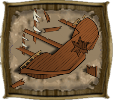Thagarr
Pining for the Fjords!
Creative Support
Storm Modder
Public Relations
Hearts of Oak Donator
Pirate Legend
Over the next couple of weeks, the US Coast Guard will be holding hearings on a tragedy that never should have happened, the sinking of the Bounty by hurricane Sandy in October 2012. Two people lost their lives in that tragedy, and we also lost one of the most filmed replicas of the great Age of Sail. Those hearings will take place in Portsmouth. VA. and may change dramatically the rules and regulations governing vessels such as the Bounty in US waters. The hearings are scheduled to run February 12-21.
Sandy was one monster hurricane and it wreaked havoc all along the eastern coast of the US, devastating community’s that will be dealing with the effects of both the hurricane, and a government that let them down, for many years to come. I won't get in to that side of the story, but I ran across an article while looking for news today that I thought some of you might find interesting.
The article was posted over on Outside Online and written by Kathryn Miles. It tells the story of the Bounty, and the Coast Guard crews that rescued 14 of her 16 crew members. It's a very long article, and I haven't had time to read all of it yet. They also link to some actual video footage recorded during the rescue it's self.
You can find the full article over on Outside Online HERE!
Sandy was one monster hurricane and it wreaked havoc all along the eastern coast of the US, devastating community’s that will be dealing with the effects of both the hurricane, and a government that let them down, for many years to come. I won't get in to that side of the story, but I ran across an article while looking for news today that I thought some of you might find interesting.
The article was posted over on Outside Online and written by Kathryn Miles. It tells the story of the Bounty, and the Coast Guard crews that rescued 14 of her 16 crew members. It's a very long article, and I haven't had time to read all of it yet. They also link to some actual video footage recorded during the rescue it's self.
As far as hurricanes go, Sandy was not particularly powerful—on the weekend of October 28, it was fluctuating between hurricane and tropical-storm status—but it made up for that in size and complexity. Sandy would ultimately cover 1.8 million square miles and take on characteristics of what meteorologists call a hybrid storm: in this case, part hurricane, part nor’easter. The Bounty’s last known position—about 100 miles off Cape Fear around noon—put the vessel right in the worst of it, with winds at 60 knots and pelting rain severe enough to render even a large wooden ship invisible on radar. Sending the C-130 was risky, but Coast Guard officials hoped McIntosh could get close enough to establish communication and assess the situation. Once weather conditions allowed, rescue choppers could fly out from Elizabeth City if need be.
The plane took off from Raleigh around 11 p.m. Before long its anti-icing system failed, forcing McIntosh to fly below 7,000 feet. Then the weather radar malfunctioned. McIntosh and his co-pilot, Mike Myers, were now flying using visual flight rules in zero-visibility conditions. Wearing night-vision goggles to help them pick through layers of clouds, they descended to 1,000 feet. Then to 500 feet—right into the brunt of the storm.
By now it was just after midnight. While McIntosh struggled to steer, Myers searched for the Bounty. “I kept asking Mike, ‘What do you see? What do you see?’” McIntosh recalls. Finally, Myers shot back, “I see a giant pirate ship in the middle of a hurricane.”
The plane initiated a sharp circle so the flight crew could get a better look. The Bounty was listing at a 45-degree angle, its starboard side all but submerged. Waves the size of two-story houses crashed over the hull.
You can find the full article over on Outside Online HERE!















